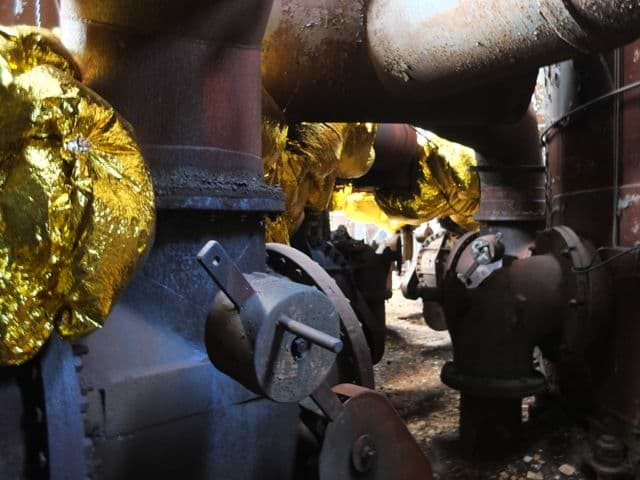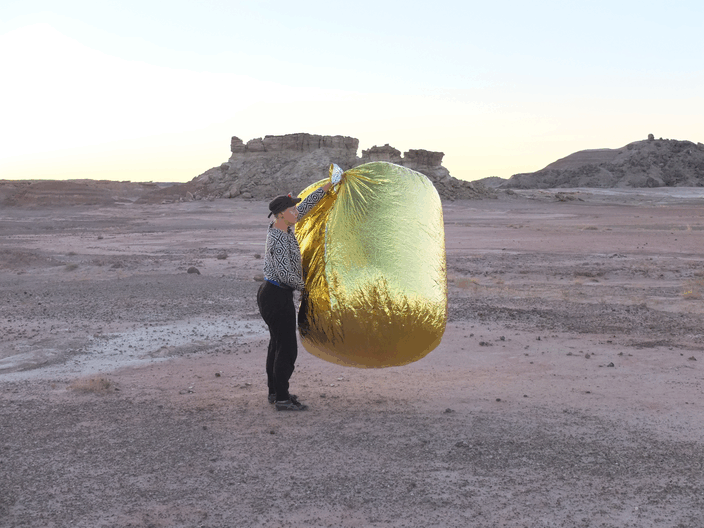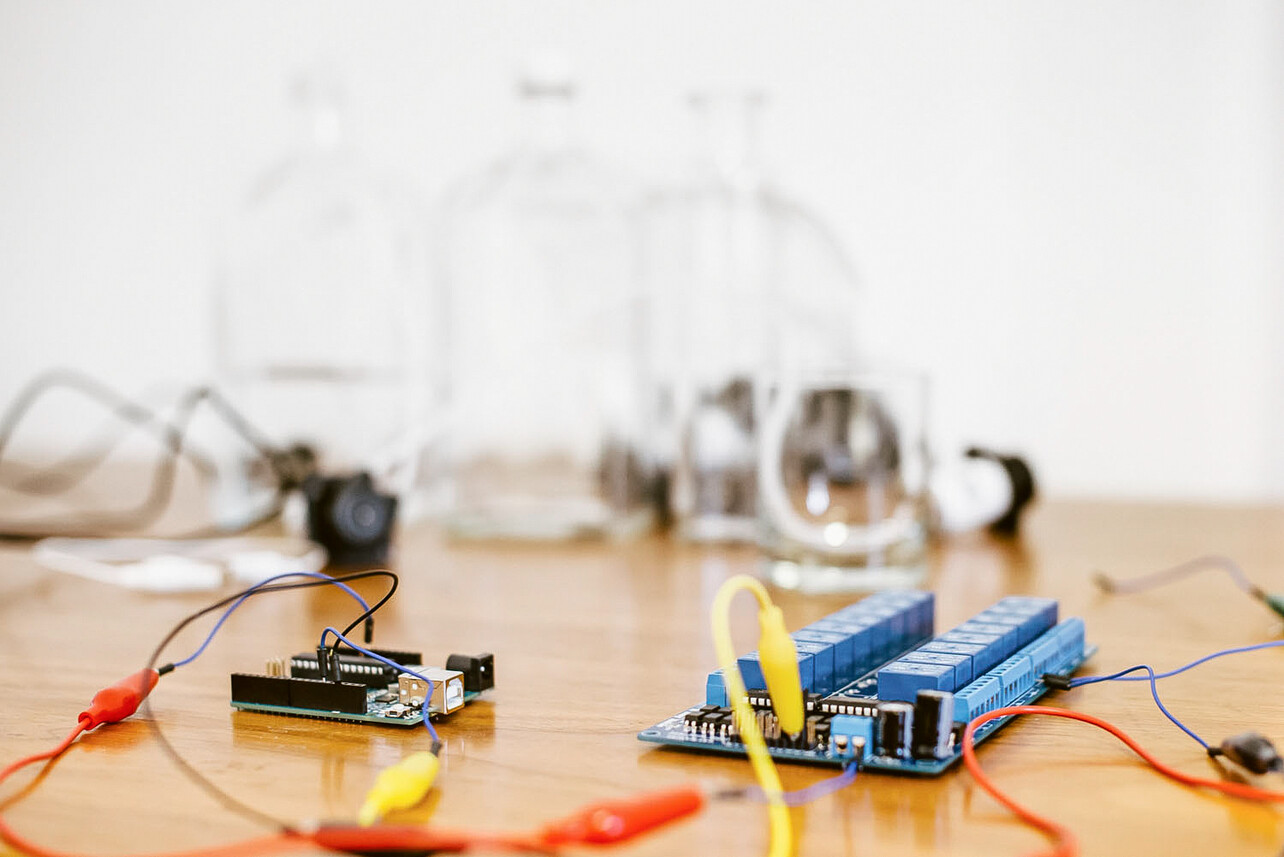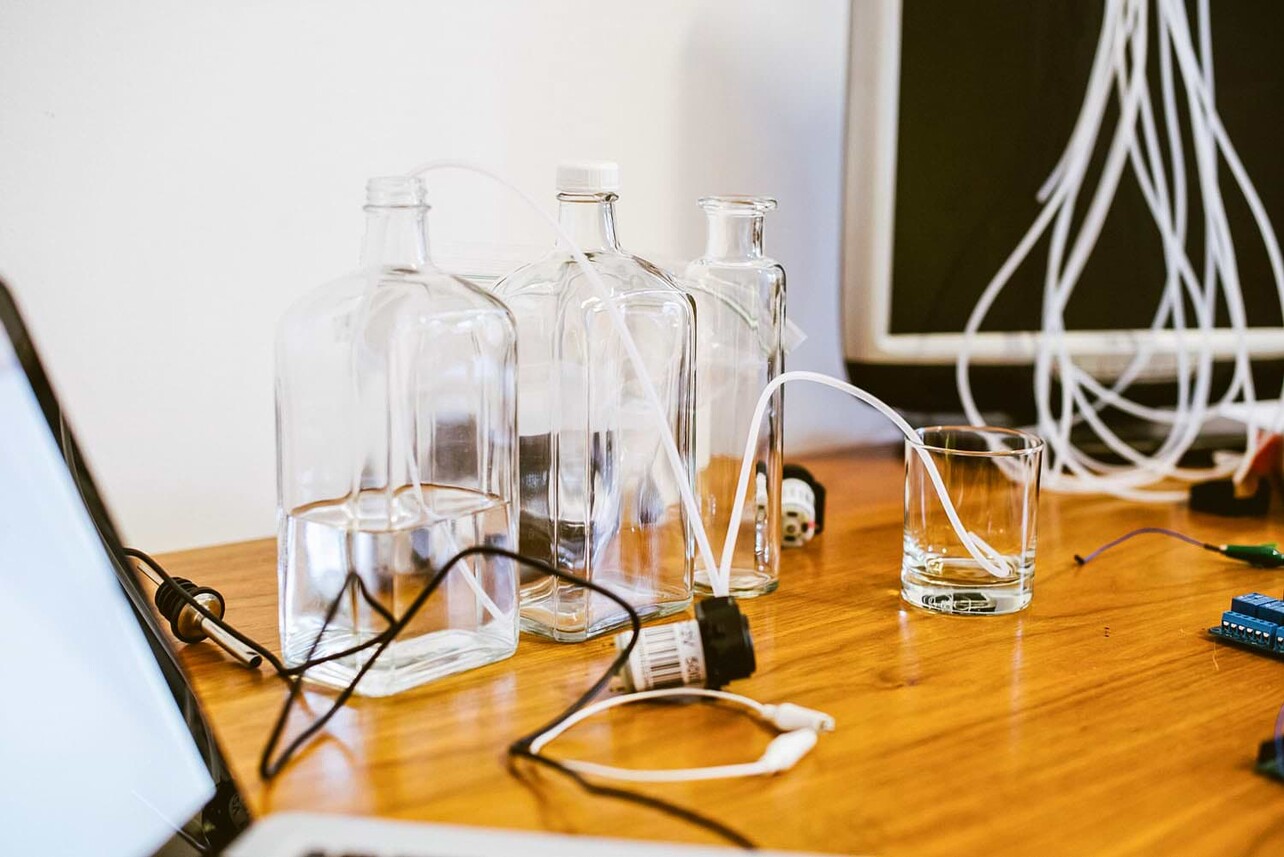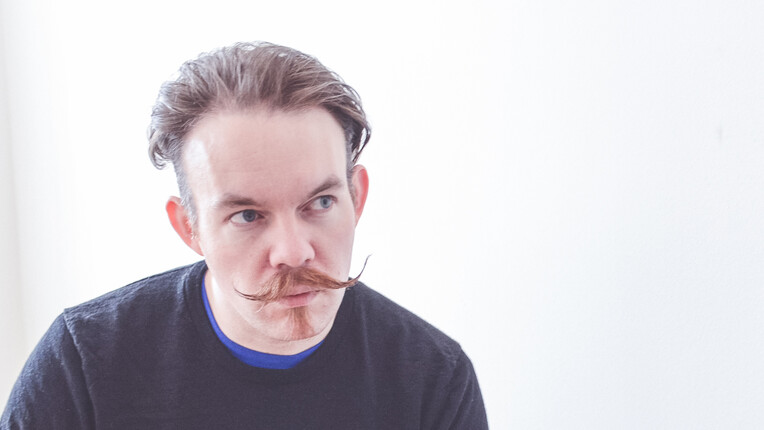
Interview with Anika Hirt & Dan Wilcox
Q21 Artists-in-Residence Anika Hirt (GER) and Dan Wilcox (USA) are spending their residency building a robot for this year’s Roböxotica festival, which will take place from December 8th to 11th at mo.ë Vienna. ‘Trust Me’, their bartending robot misunderstands your order and serves you something you did not want instead. It is a reference to the often troubling ‘autocorrect’ feature in text messages. We met the artists at their studio for a little chat about the robot and their take on media art, technology and its future.
Q21 Artists-in-Residence Anika Hirt (GER) and Dan Wilcox (USA) are spending their residency building a robot for this year’s Roböxotica festival, which will take place from December 8th to 11th at mo.ë Vienna. ‘Trust Me’, their bartending robot misunderstands your order and serves you something you did not want instead. It is a reference to the often troubling ‘autocorrect’ feature in text messages. We met the artists at their studio for a little chat about the robot and their take on media art, technology and its future.
You are right in the middle of building the ‘Trust Me’ for Roböxotica – how did you come up with the idea behind it?
Anika: We were bouncing around a bunch of ideas and that was the one making us think “Oh, everybody knows that or has a connection to autocorrect, which can play tricks on us.”
Dan: You know what you want but you sometimes get something else.
You mentioned that you will combine the robot with an inflatable that you, Anika, have used repeatedly in your practice. What is the robot going to look like?
Anika: We actually just decided to take a more political approach, considering the current events, and to put the robot in an inflatable, similar to the ones I’ve done in the past.
Dan: Basically, it’s a giant golden ass! Sometimes you get what you get, whether you want it or not. That is how you get your cocktail – you pick up a red phone and have a conversation with the ass, trying to make an order, and you probably end up with something you didn’t order.
Anika: We will have a red phone, so it is a little bit of a reference to the red line, the hotline to the president.
So your approach changed in the past few weeks with everything that is going on. Is this the first time you are working with a political message?
Dan: In general we both don’t really do political art but now we’re just trying to connect with things that are going on, especially in respect to where we come from.
Anika: It also connects to autocorrect, though. We are now taking more of a ‘speech recognition’ approach than one relating to texting, where you write and the computer gets it wrong. So what you speak will be recognized by software and then corrected. It’s like all these promises were made and then suddenly they are not important anymore, and you just get something thrown at you that you were not expecting.
Dan: There will also be a speech bubble, a screen that will show the thought process inside the inflatable. So you can see what the robot thinks it hears.
You both have a technical background. How did you find the artistic appeal in this area? Did you study in a technical field with the artistic side of it already in mind or did this interest develop later?
Anika: I was always drawn to art, so it was more of a practical decision to study something technical that I can also live from. But I was never really interested in working for a big business, even when I studied Media and Computing and commercial jobs started coming along. So I studied Interface Cultures afterwards, which basically took a more creative and interactive art approach to technology.Dan: I went to college and studied engineering because my dad is an engineer, but I was also playing in bands and all my friends were artists. After working in a few different fields, I ended up getting a Master of Fine Arts to sort of combine those two sides. What it really just comes down to is that I like using the tools of engineering, but in different ways, and realizing ideas with them. Software and electronics is what most of current society is built upon, so I feel this is valid as expressive media. We are used to things like photography now, time-based media like video that is full of communication. But now everything is also mediated through text and software. We’re trying to reference that with autocorrect in the robot, and now to some degree with the speech recognition system as well.

Dan Wilcox showcasing the speech recognition during the interview.Photo © Eva Ellersdorfer-Meissnerová
Will you know beforehand how the robot will react, what kind of drinks he will actually serve?
Anika: We have different parts, almost like different stations all working individually right now, and the next step will be to make them all work together. For the conversation part we are actually using a really old program called Eliza.
Dan: Eliza is a program from the 1960s, it was basically the first Jungian therapist written as a program. It was created by Joseph Weizenbaum and essentially the first chat-bot at a time when nobody had even thought about something like that.
Anika: The first version still had a typewriter, not even a screen, so you would type something and it would print it. You typed, the computer wrote the answers and you could read the conversation afterwards, when it was all printed out. People took it very seriously. They sort of treated it like an actual person. They told the computer their problems, not knowing how to deal with the very generic answers they were given. The computer just kept asking things like ‘How do you feel about that?’
Dan: It is a Jungian therapist, so it doesn’t actually say anything but gets you to talk. The actual software isn’t so bad, though. We are using a modified version of it for the robot’s brain. It will generate what it thinks you said, even when it doesn’t really understand you.
Even though it might not be the best speech recognition system in the world, the system will work and the emphasis will be more on the lack of conversation. It’s about taking a thing that works and making it work in a way that is not supposed to work. That is something that we both enjoy doing.
Anika: The other, more mechanical part of the robot consists of all the pumps. There are going to be 13 pumps with 13 different liquids, mainly alcohol and some juices. Overall we will have a list of 40 cocktails that can be made from those 13 liquids, although they are unusual cocktails you wouldn’t normally know. Whiskey Sour, for example, is part of the list, but other than that rather uncommon drinks will be suggested by the bartender.
Will people order from that list or can they order anything?
Anika: People won’t actually know the list, but they will end up getting one of the 40 cocktails on it. So you can order anything, whether the bartender knows it or not, but it will give you one of the 40 cocktails that it does know.
As to the serving or quality side, people will still have to stir themselves. Our idea is more on the conversational end and the conceptual side of things than on the physical or mechanical side, which is quite simple. All the pumps and tubes will be hidden inside the inflatable. Each pump will have a tube and then all 13 tubes come together and squirt out the drink.
Dan: On the mechanical side half of the robots will probably work the same way. It’s just a row of bottles and tubes and pumps that suck the stuff out and squirt it into a cup. Except ours will be a giant ass. You put the cup under the hole and that’s how you get your cocktail.
Where do you see the use of machines and technology going in the future? Are they going to replace human interaction increasingly or even completely someday?
Anika: Well, that is up to us. That completely depends on how much we fight it.
Dan: I’d say yes and no. As much as we complain about technology telling us what to do and shaping our lives, we also make the choice to let it shape them. These things are created by humans for specific reasons, so it is up to us to decide how we want them to be used. At some point, things are beyond our control, like with drones. But for example our phones tracking our every move is definitely something that is in our own hands – if nobody wanted to be tracked, everybody would throw their smart phones away. For a really long time I didn’t want a smart phone because I didn’t want to check it all the time, and then I realized it’s not the phone that is making me do it, it’s me. So I can choose not to be bothered by it.
Most people probably don’t think about what can be tracked or what is really happening with all the information on their phones, but I’m an engineer, I understand the software behind it. So I automatically think differently about these things.
Anika: That’s the thing. I think in our society most people don’t care about these things. It looks like it’s going in a direction where things are more and more connected, digitally and virtually.
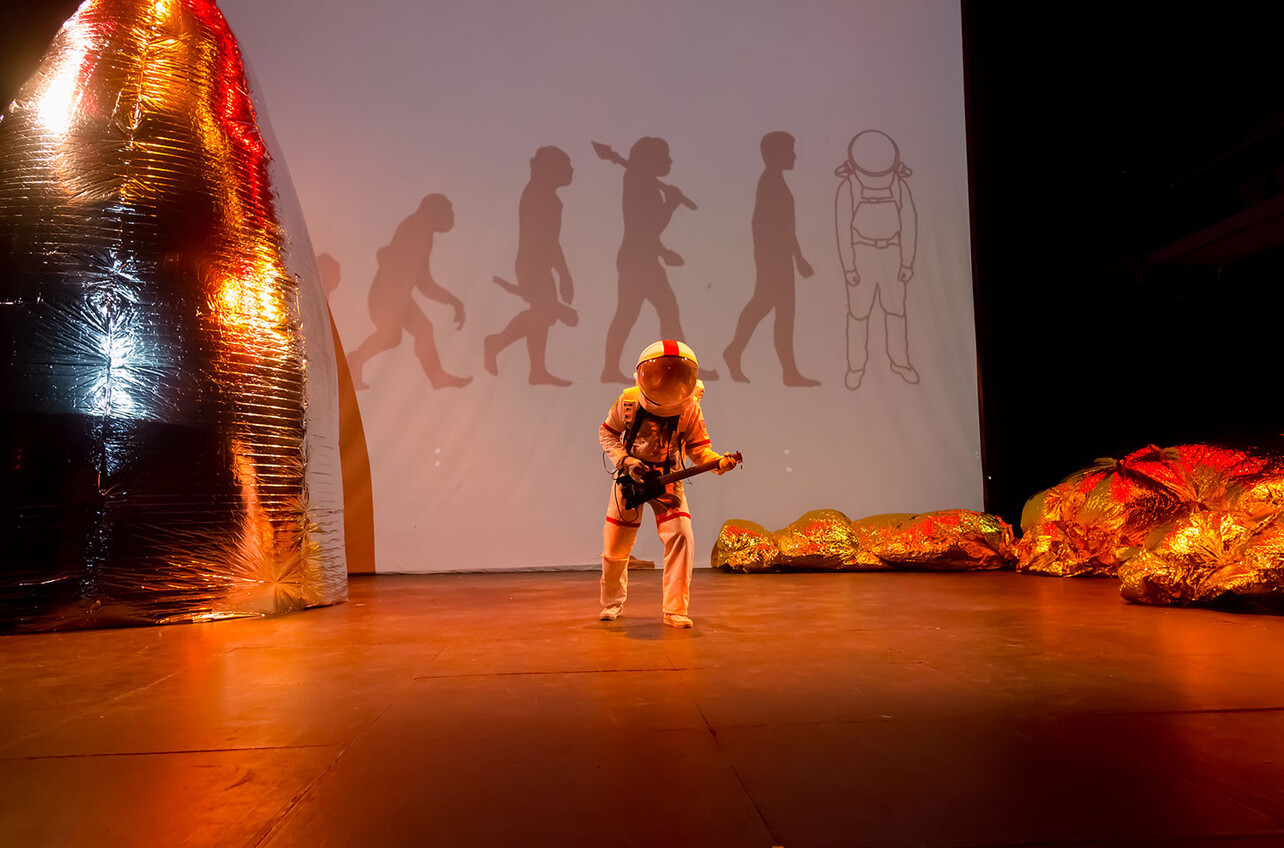
Dan Wilcox during his performance 'Onward to Mars' with an inflatable rocket by Anika Hirt.© Dan Wilcox
Recently I was talking to a performance artist whose performance is really about the moment, about her, her body and the audience right there. She doesn’t really think about the documentation of the performance, which could be shown in other contexts as well. Where do you stand on that, Dan? Do you plan your performances with a certain form of documentation in mind or are your performances also more about that specific moment and audience?
Dan: That depends. I have a couple of performance works for video only, so I built a software system to do a specific thing. For example, one was for visualizing the shape and movement of a mouth as you read a poem. Another one was for tracking the location of my nipples. So with these kinds of work I build a system and perform with it. Sometimes it might take ten or twelve tries until I get what I want but then in a way the performance is the documentation – me, by myself, doing it.
And then there are other, more traditional things I do. I have a live music and underground background, with punk and rock. In all that I have my own audio and video software, mappings and things like that to make the music, and that is more about the live aspect. But still I don’t really have any studio recordings, only live recordings. It is a computer system where everything is generated and mixed in software, so it’s making audio files right away. After the show is done I can burn a CD and if you buy one you get a CD of that show you just went to.
For a performer the audience is so important because the performance benefits from the interaction with its audience. For me it is more about the communication between me and the system, the machine that I built myself.
Interview: Lisa Ribar
